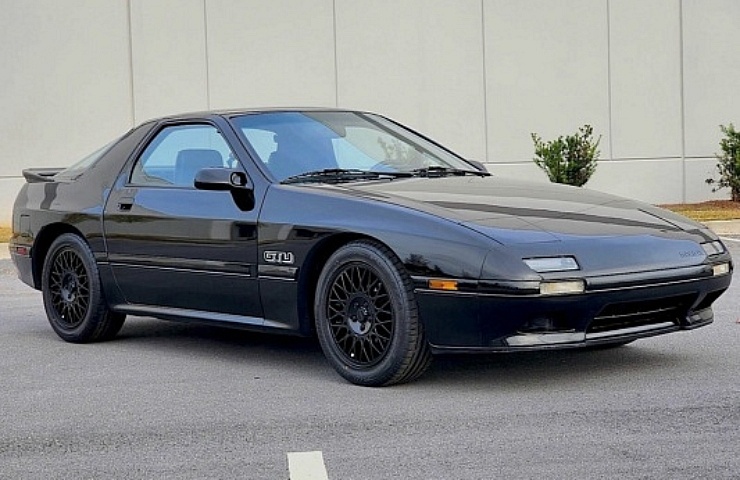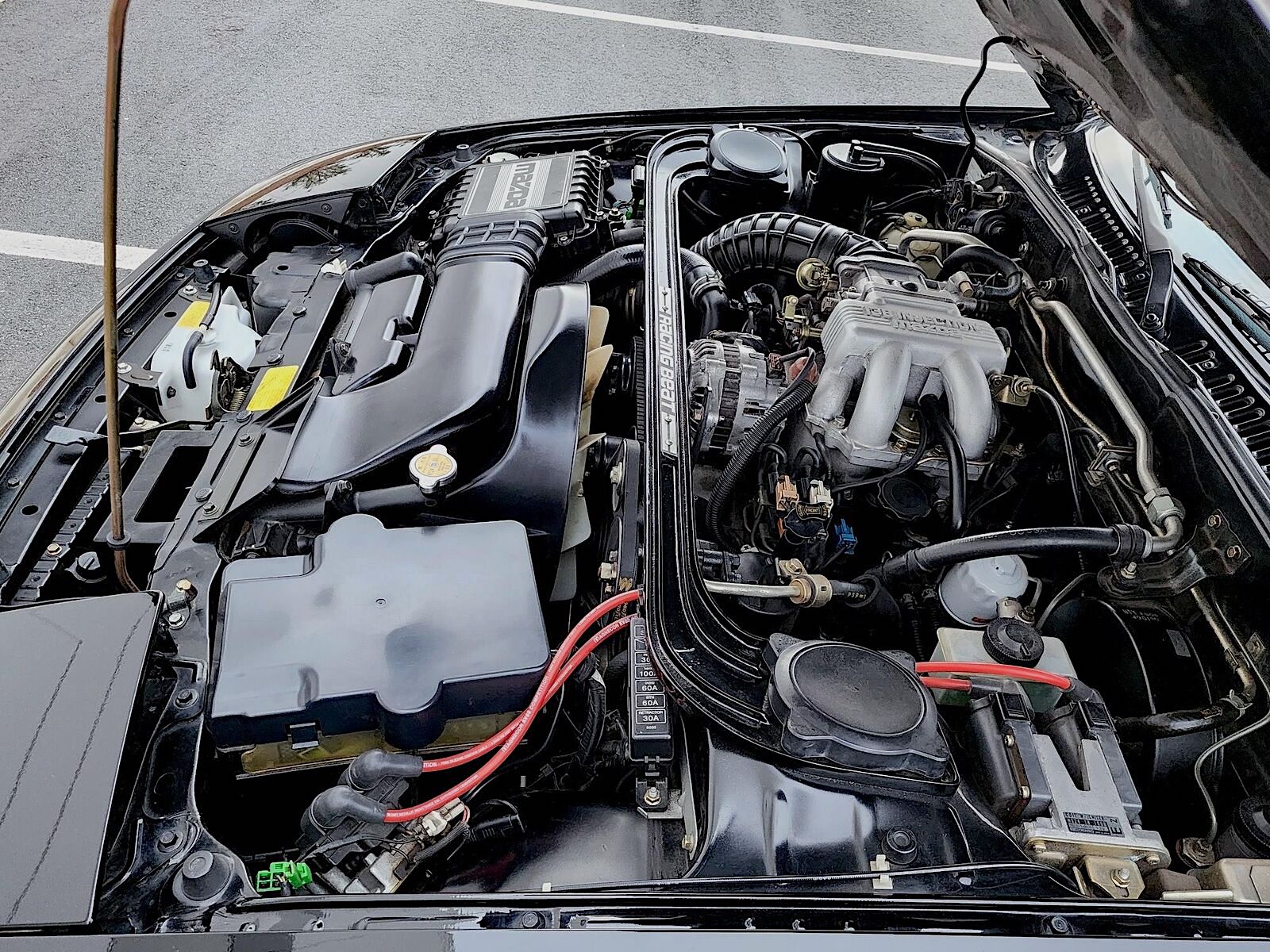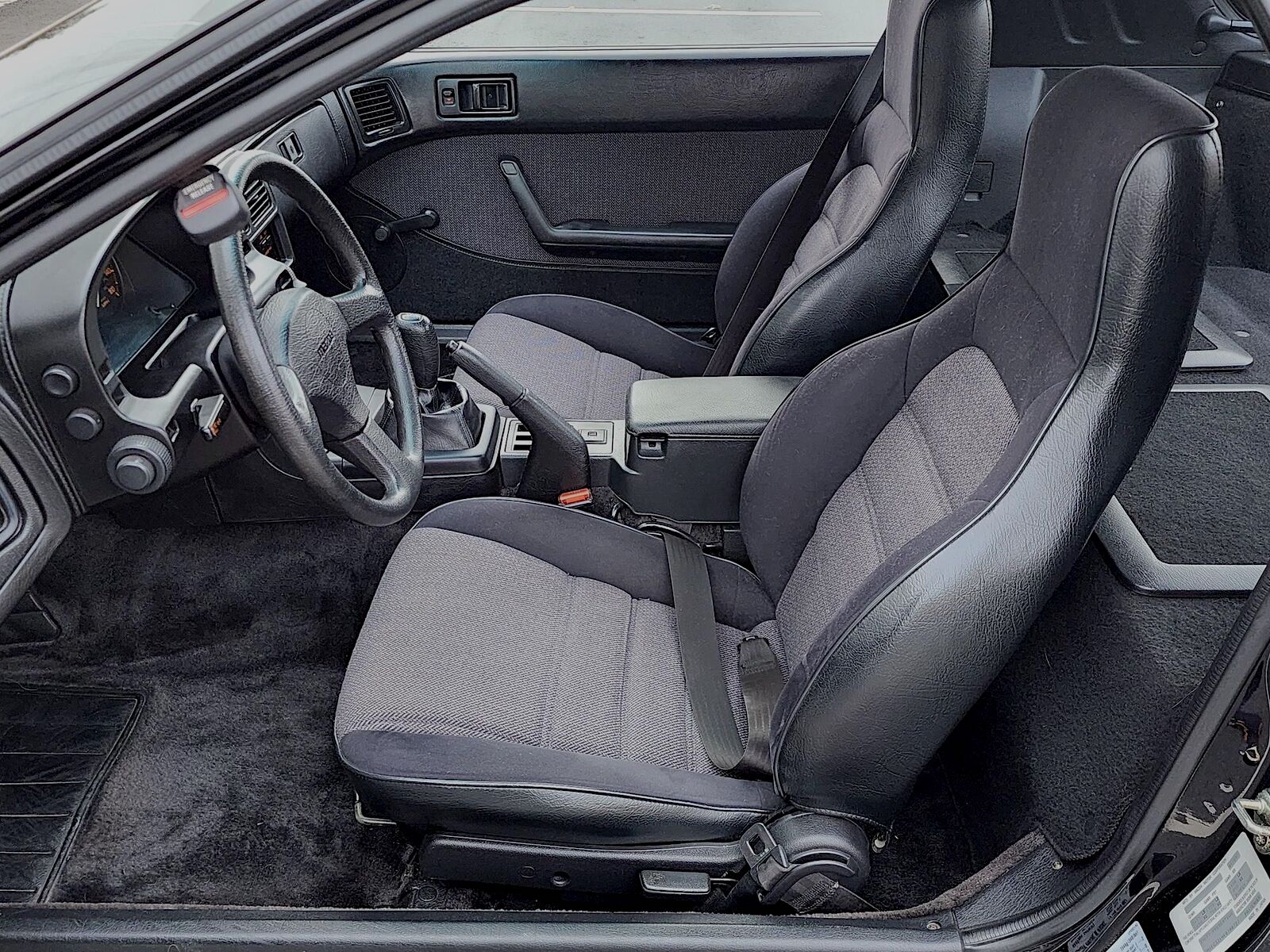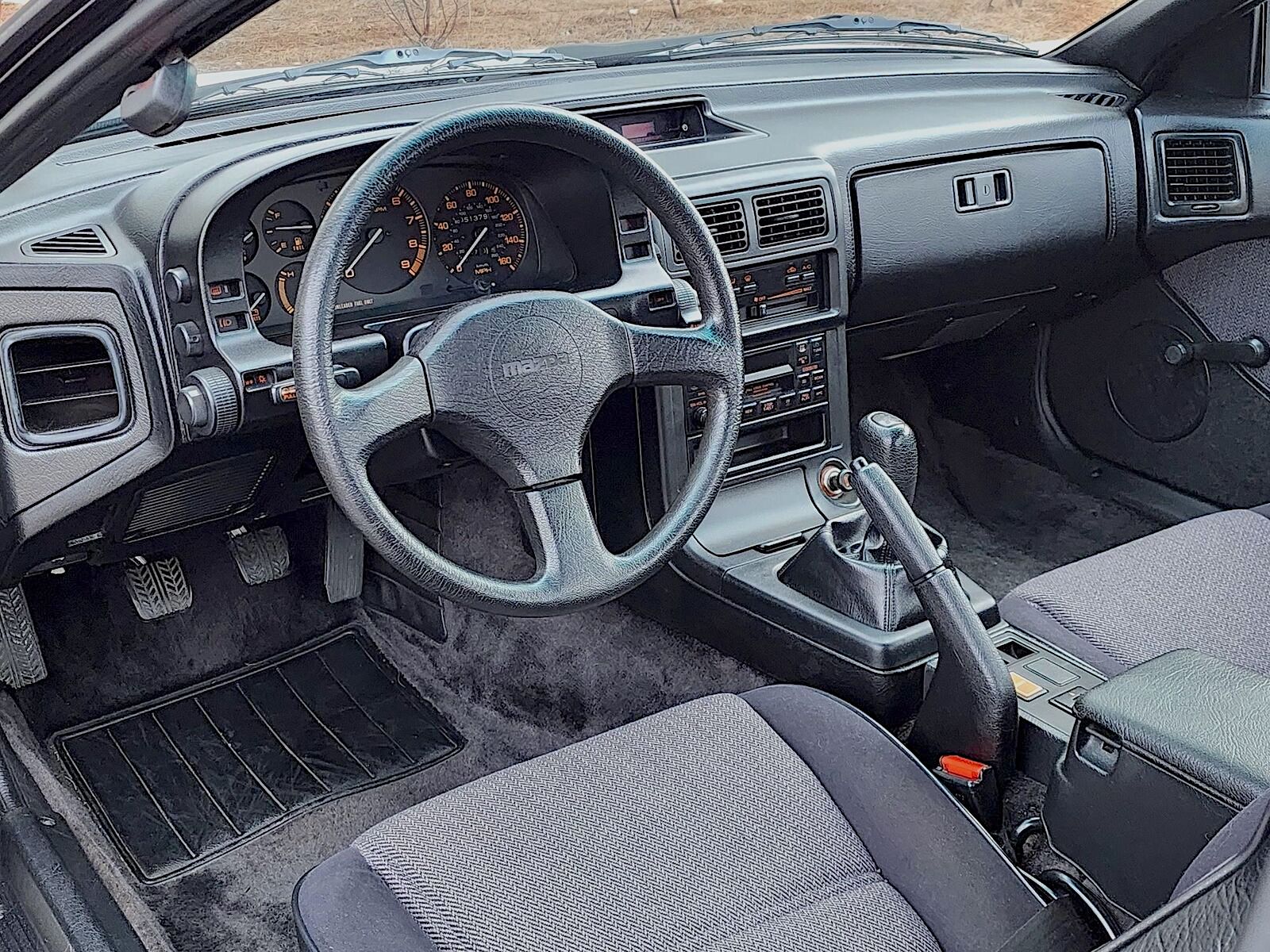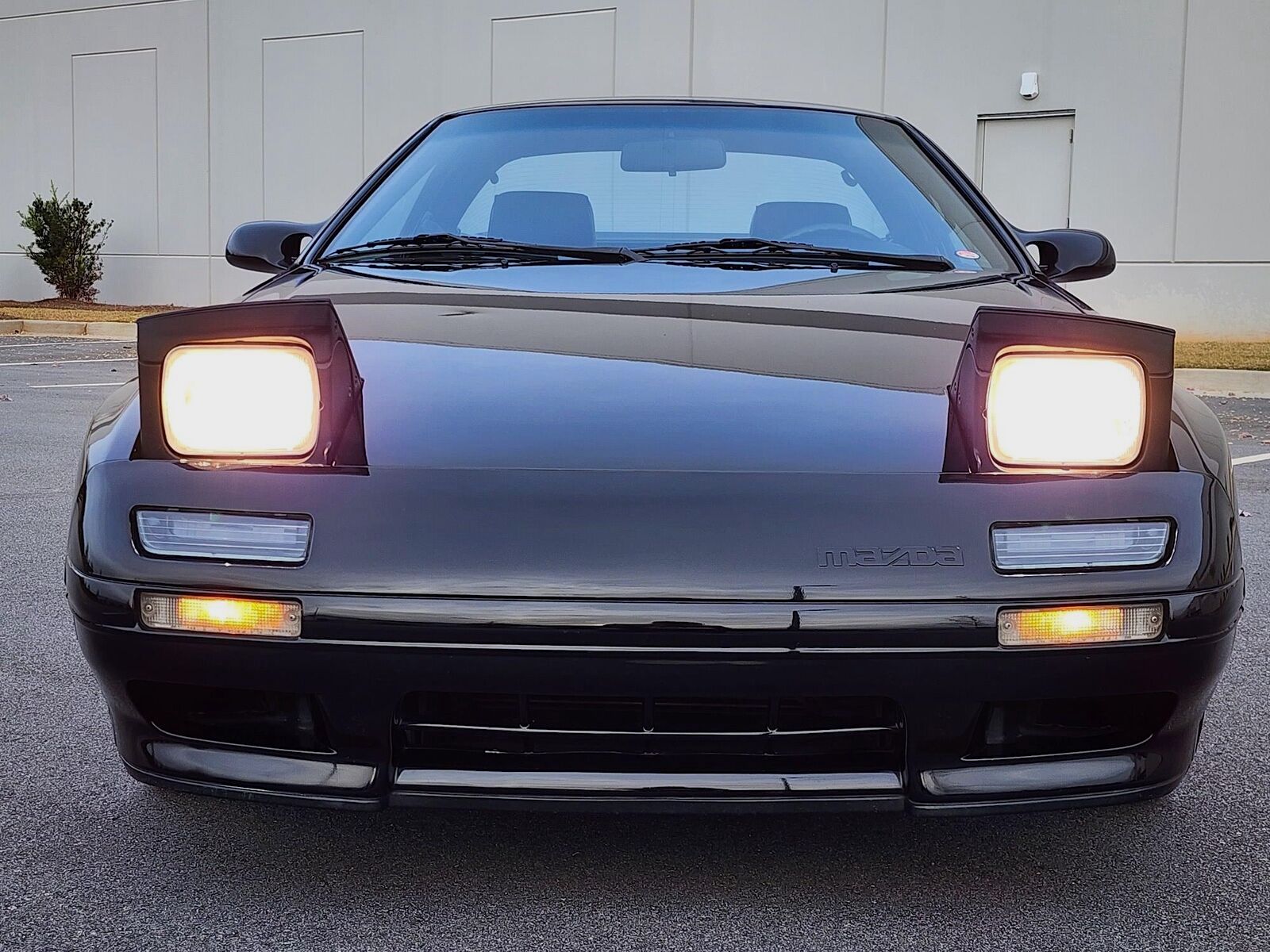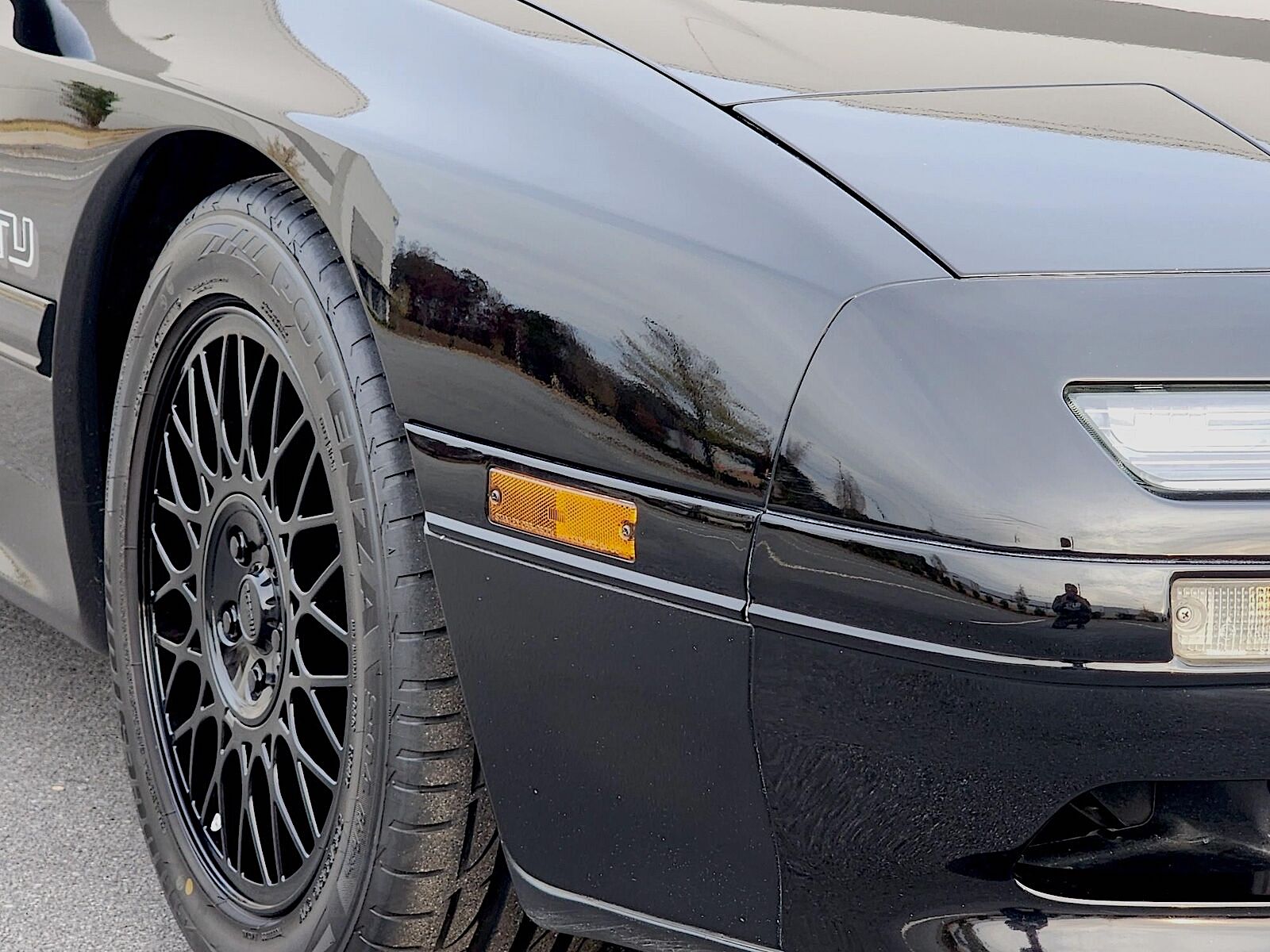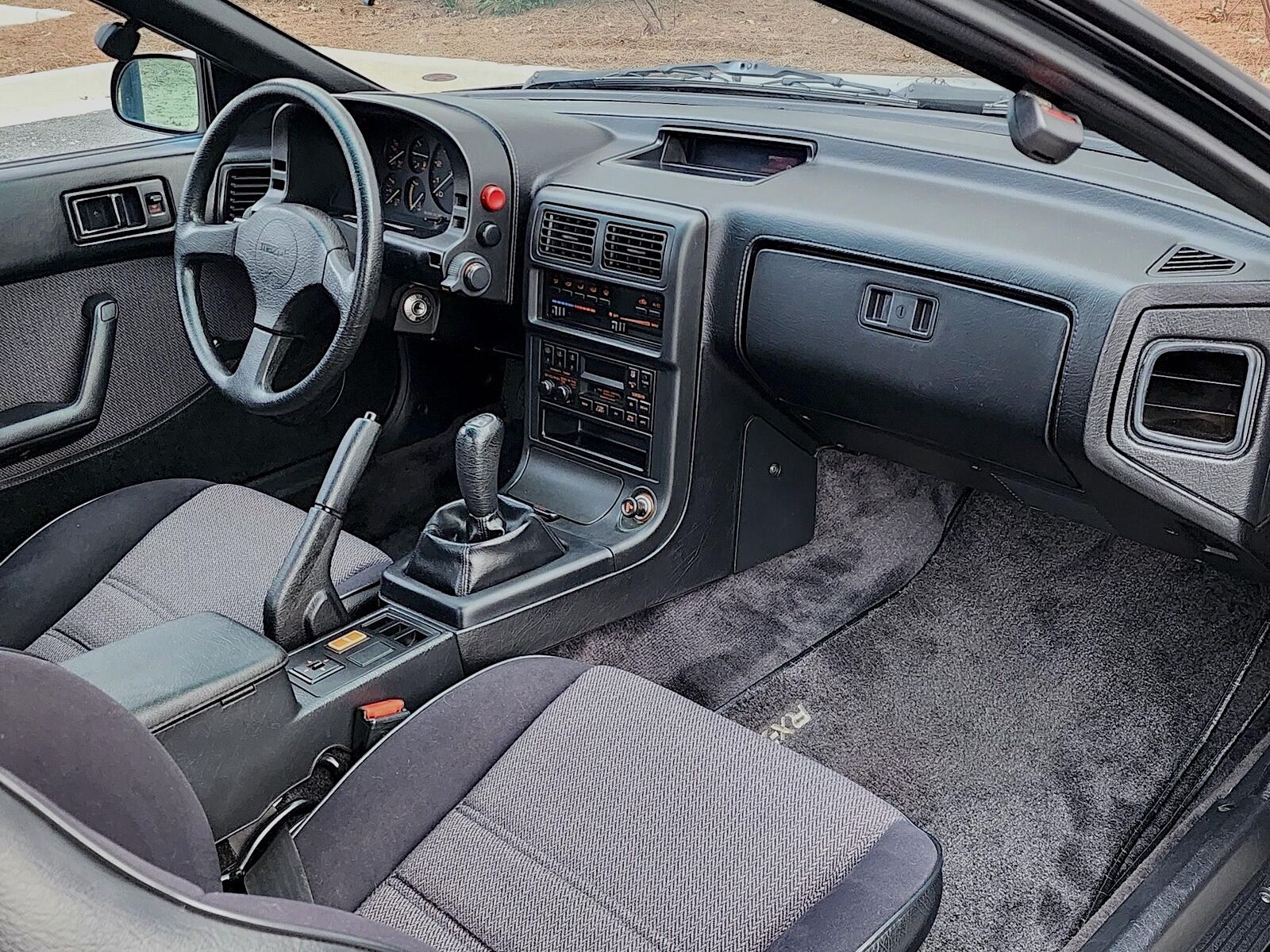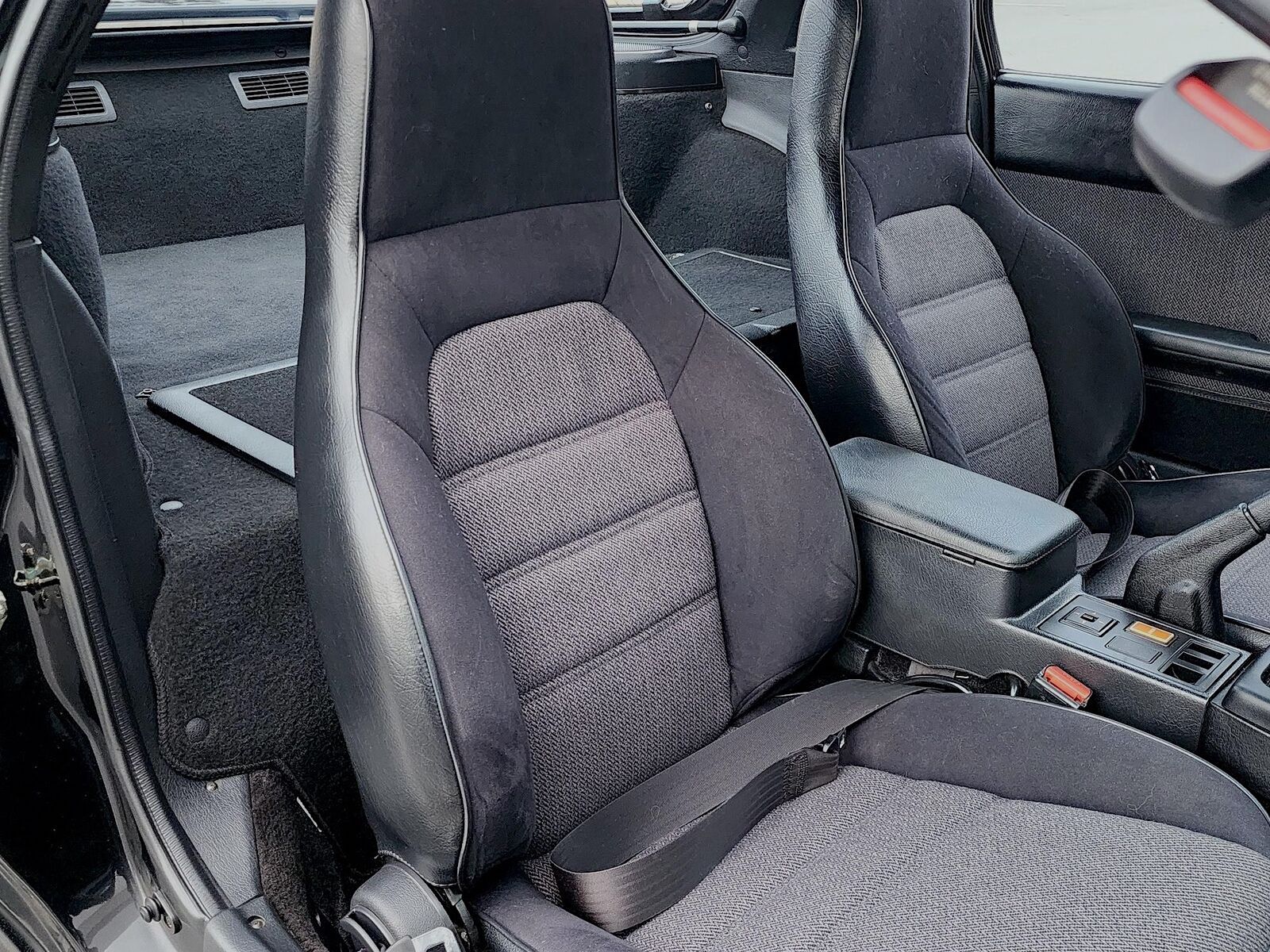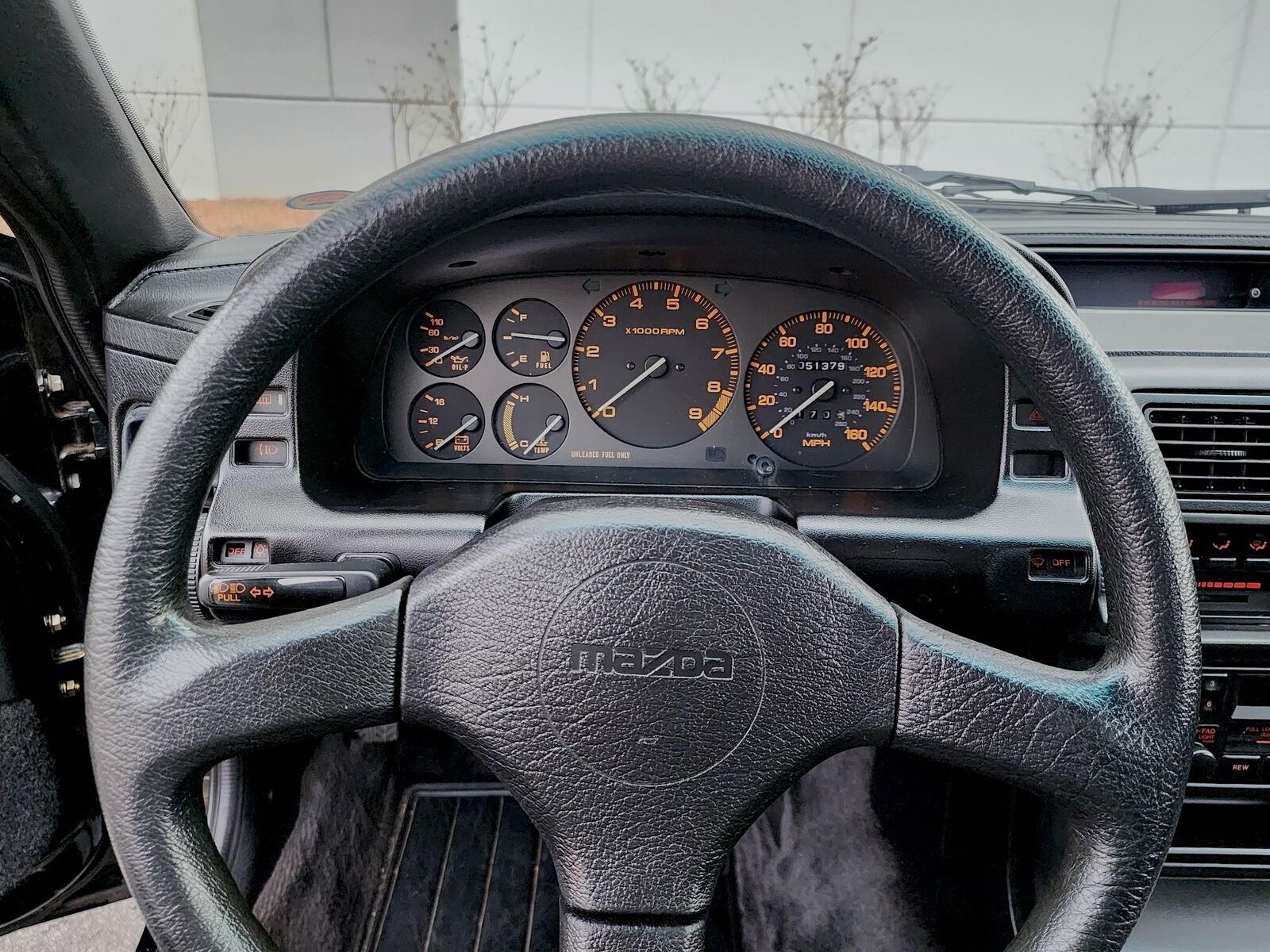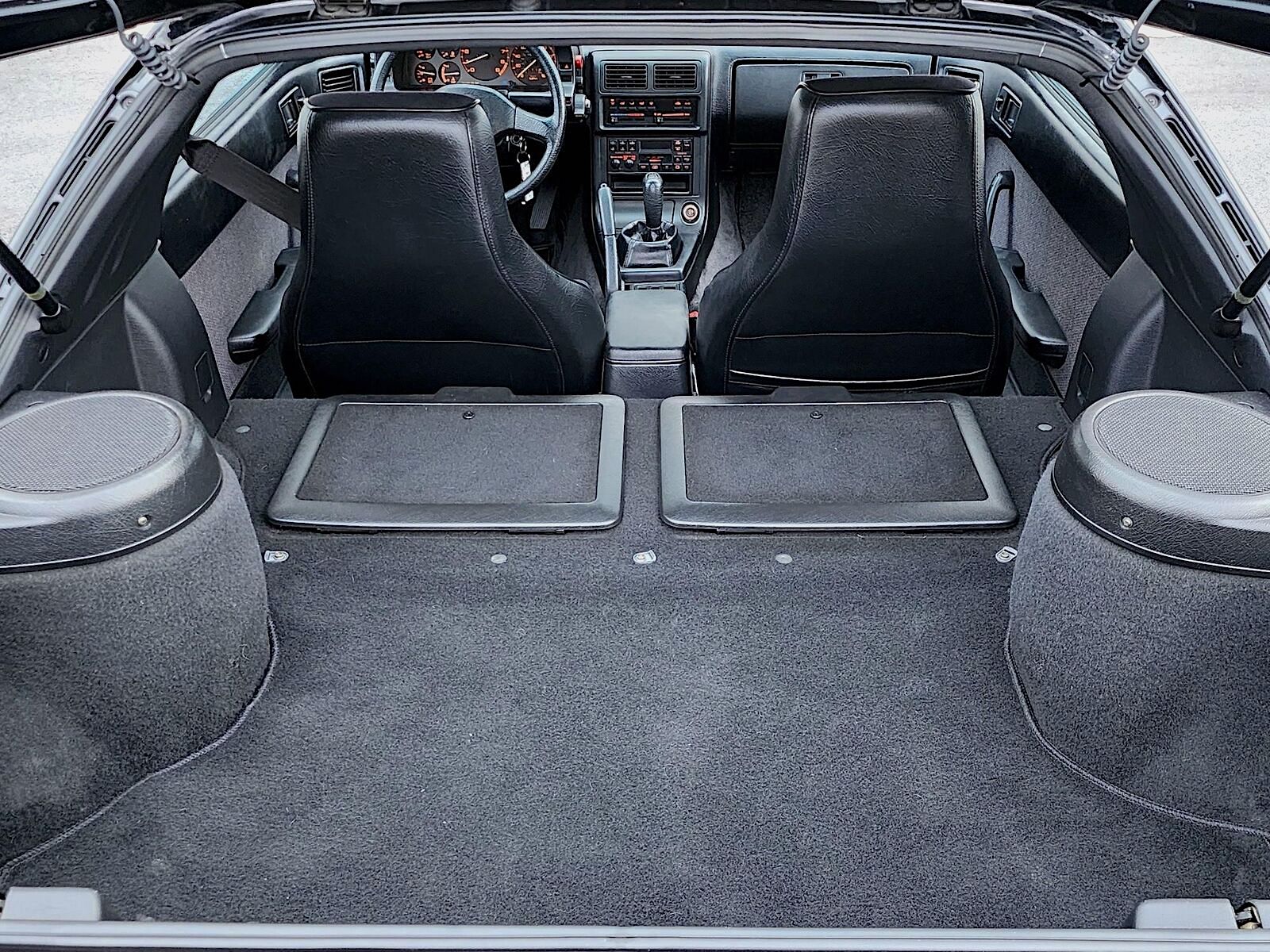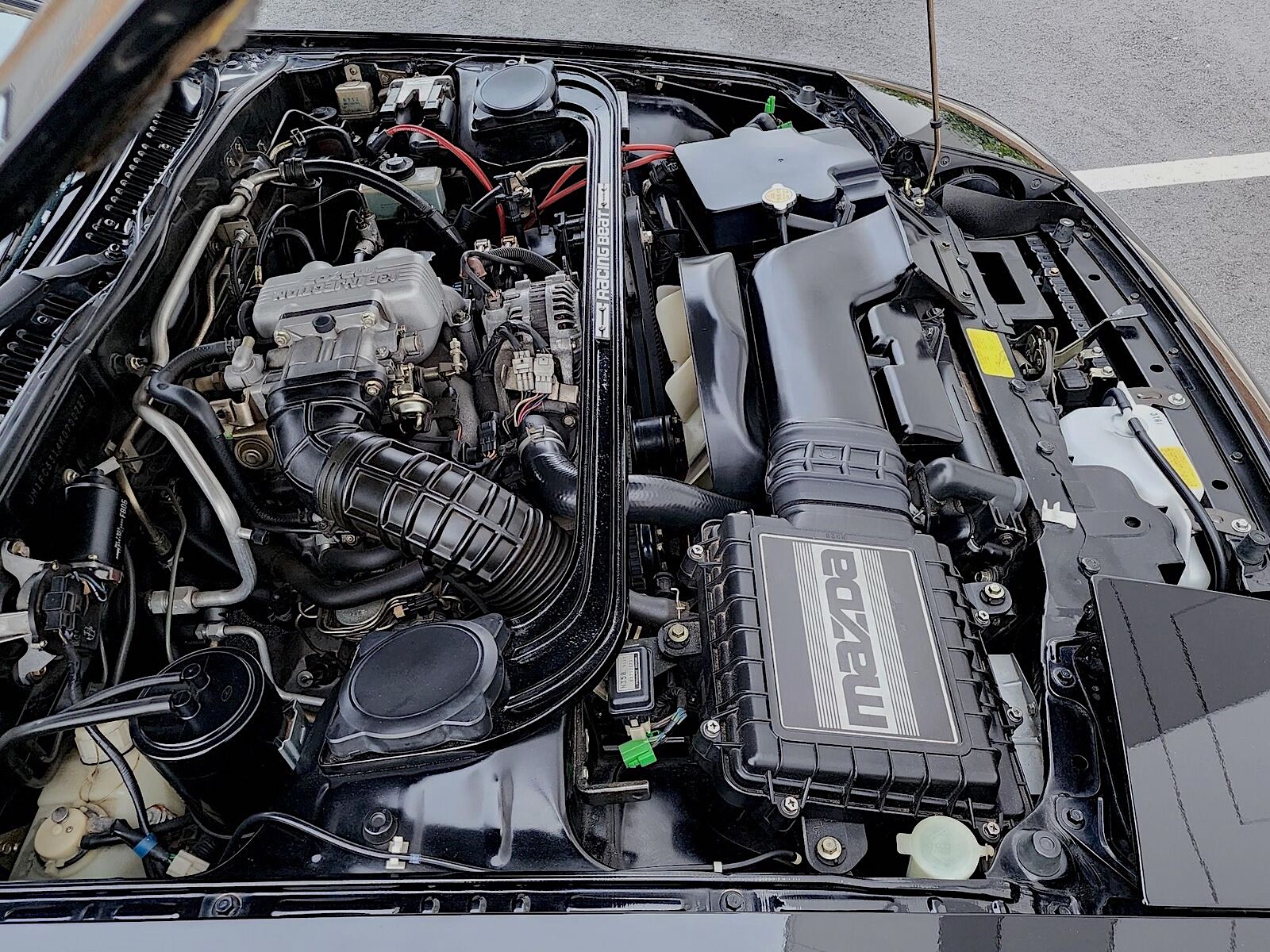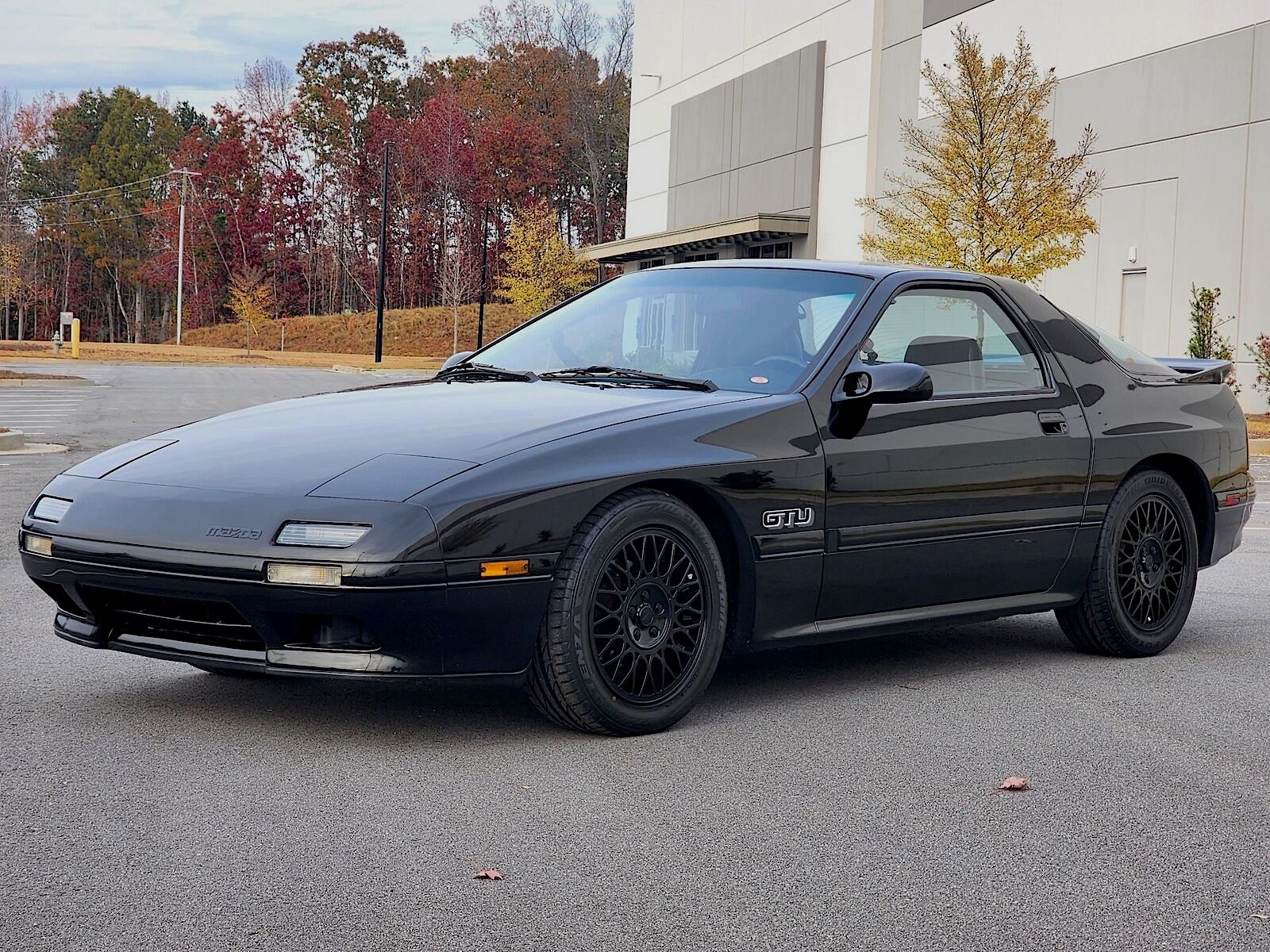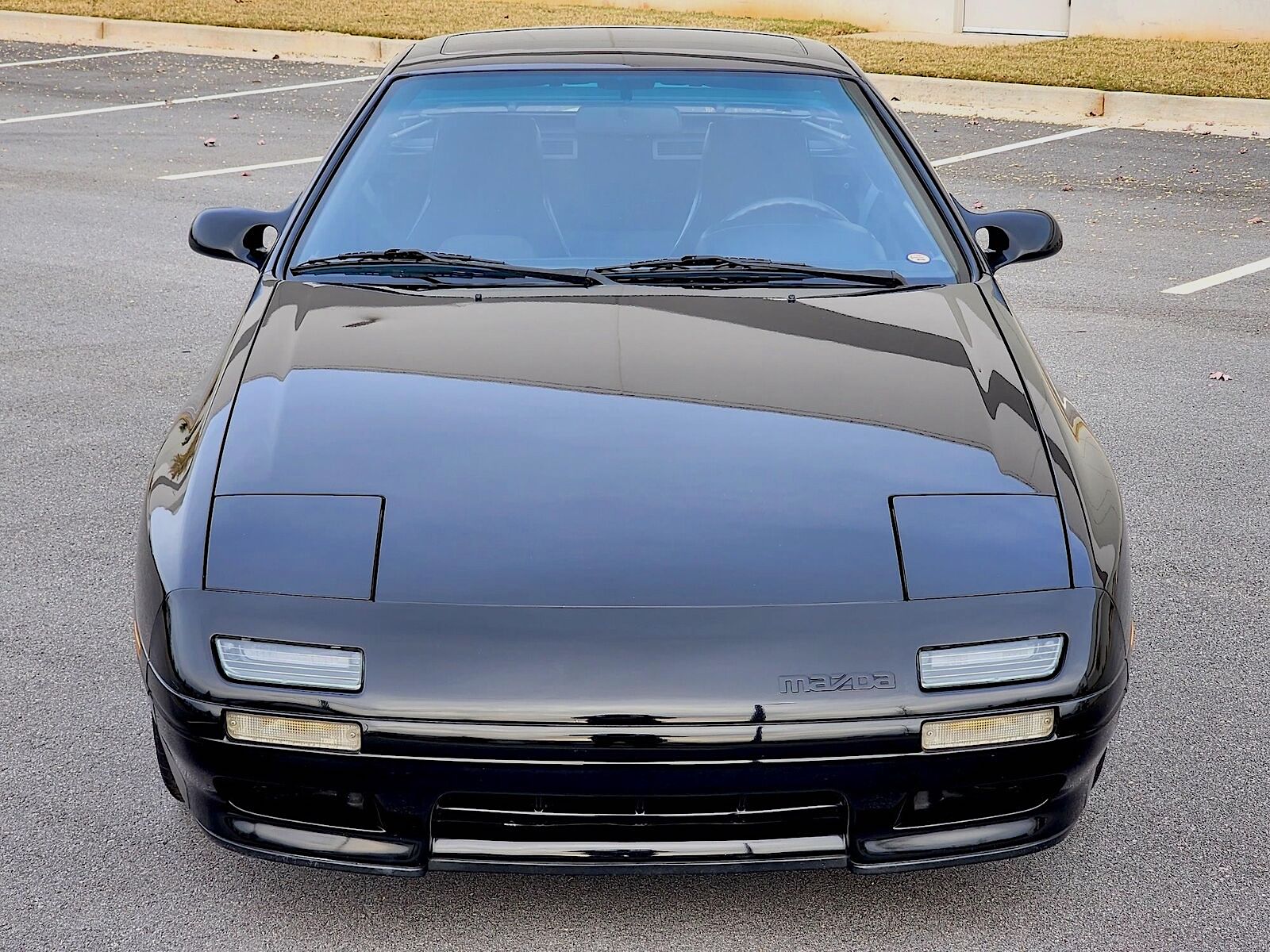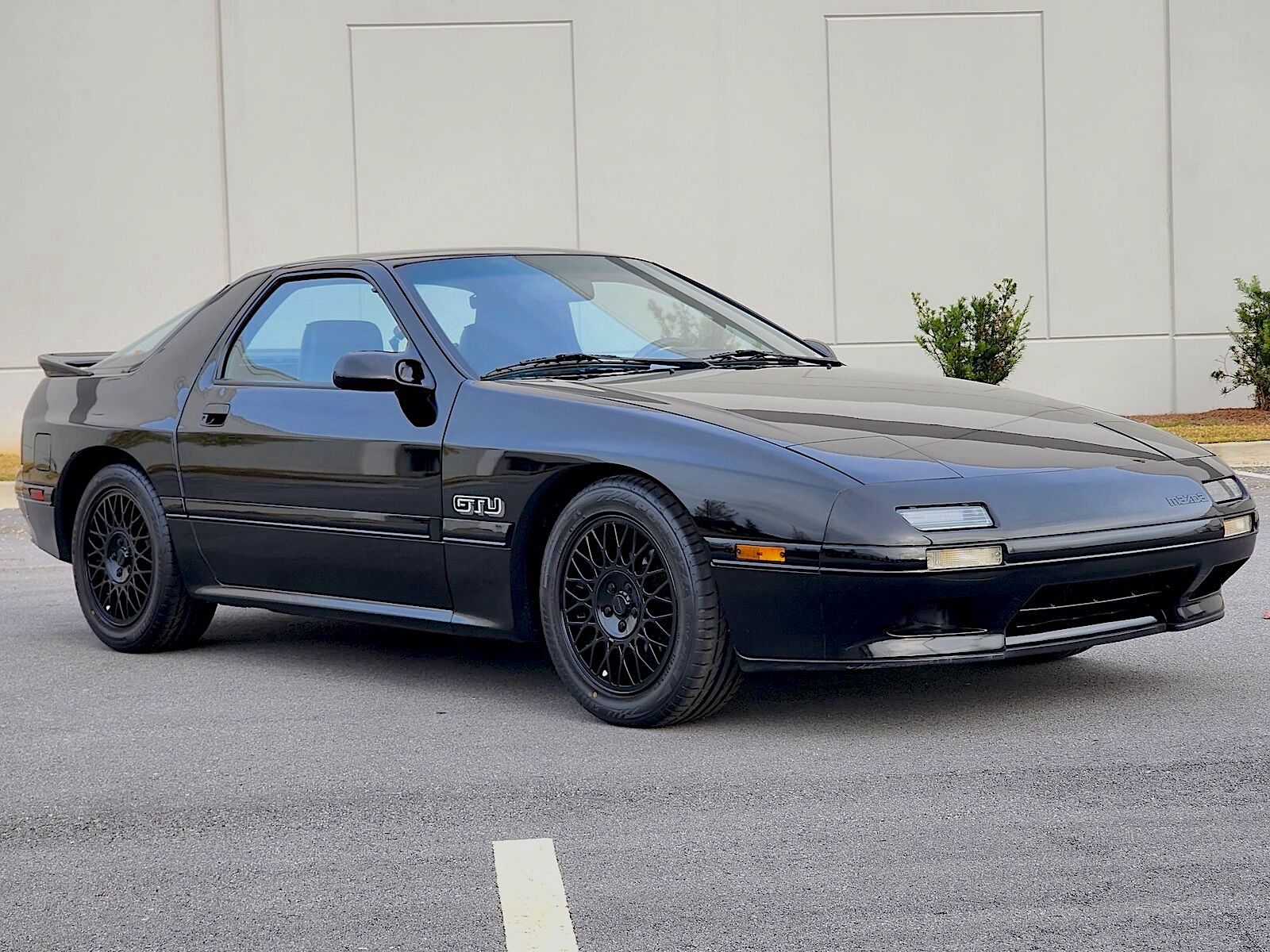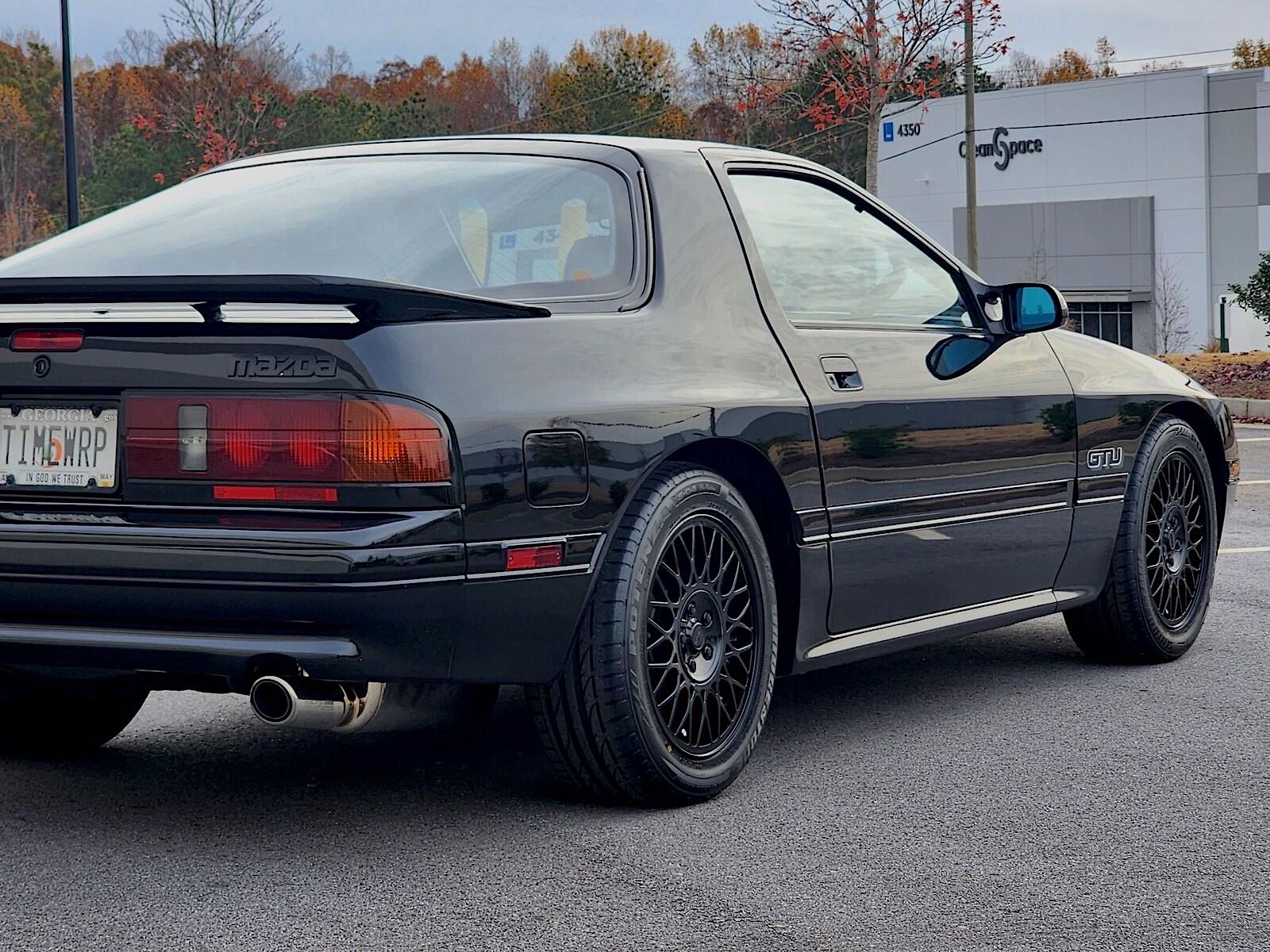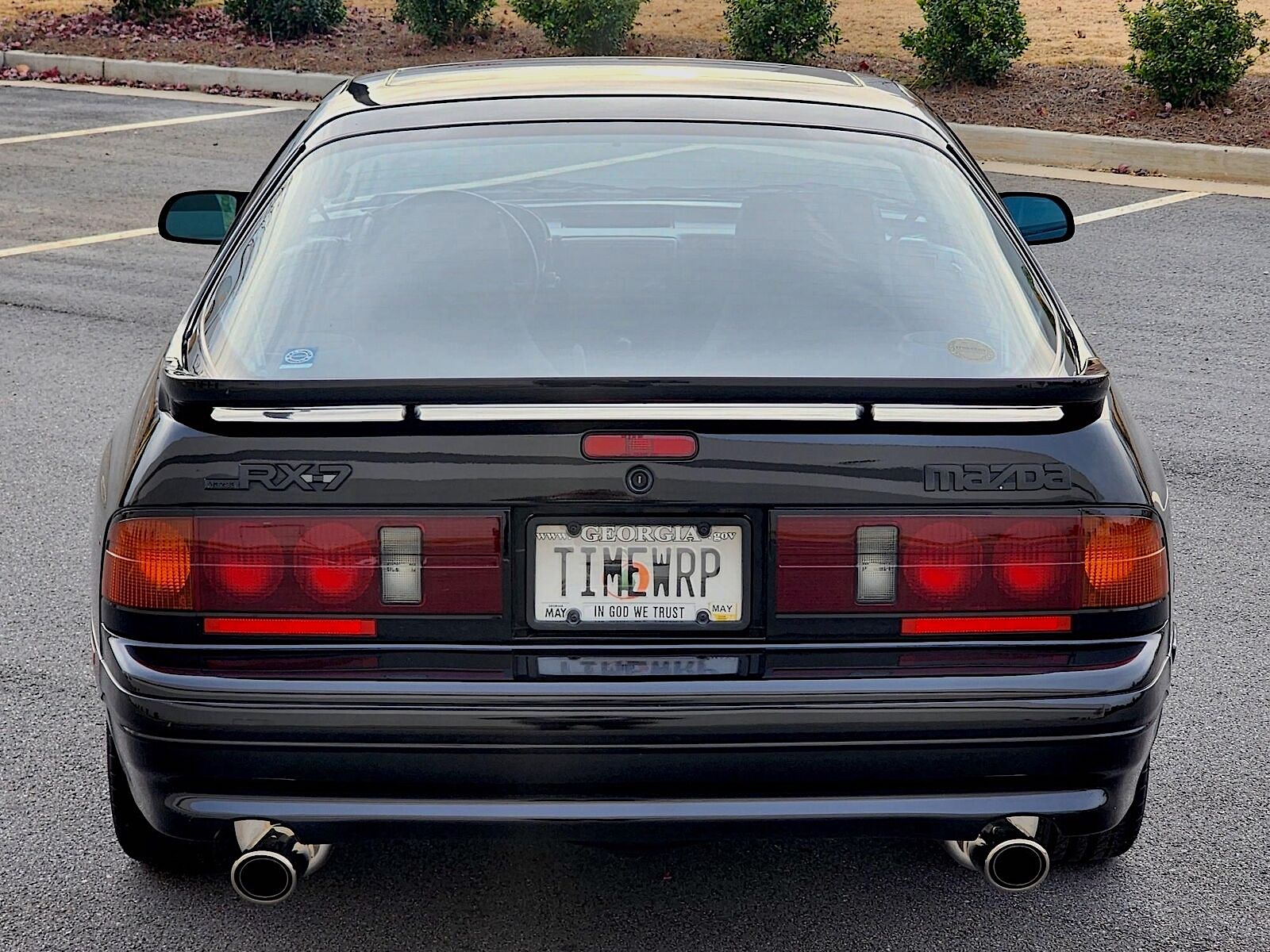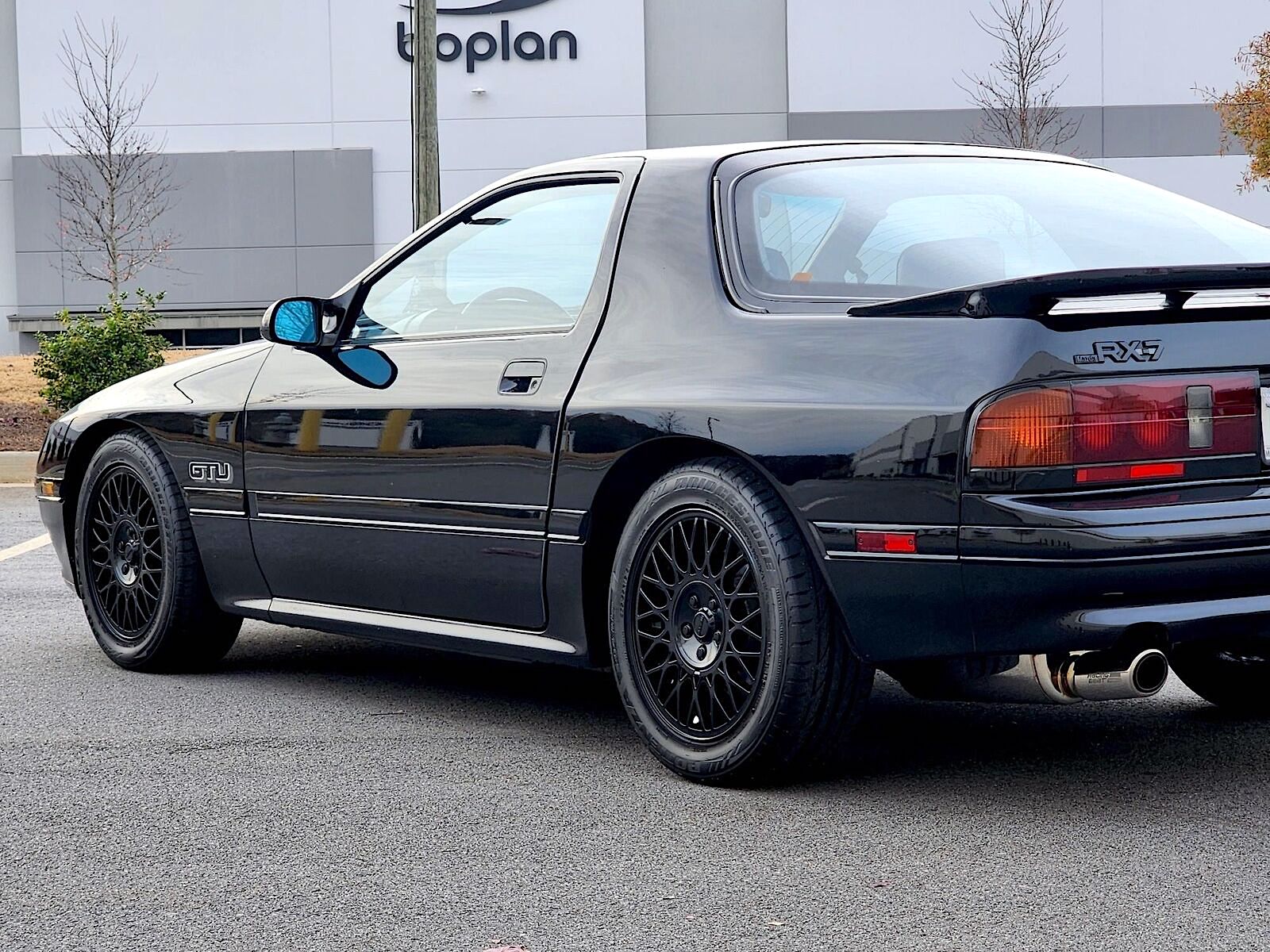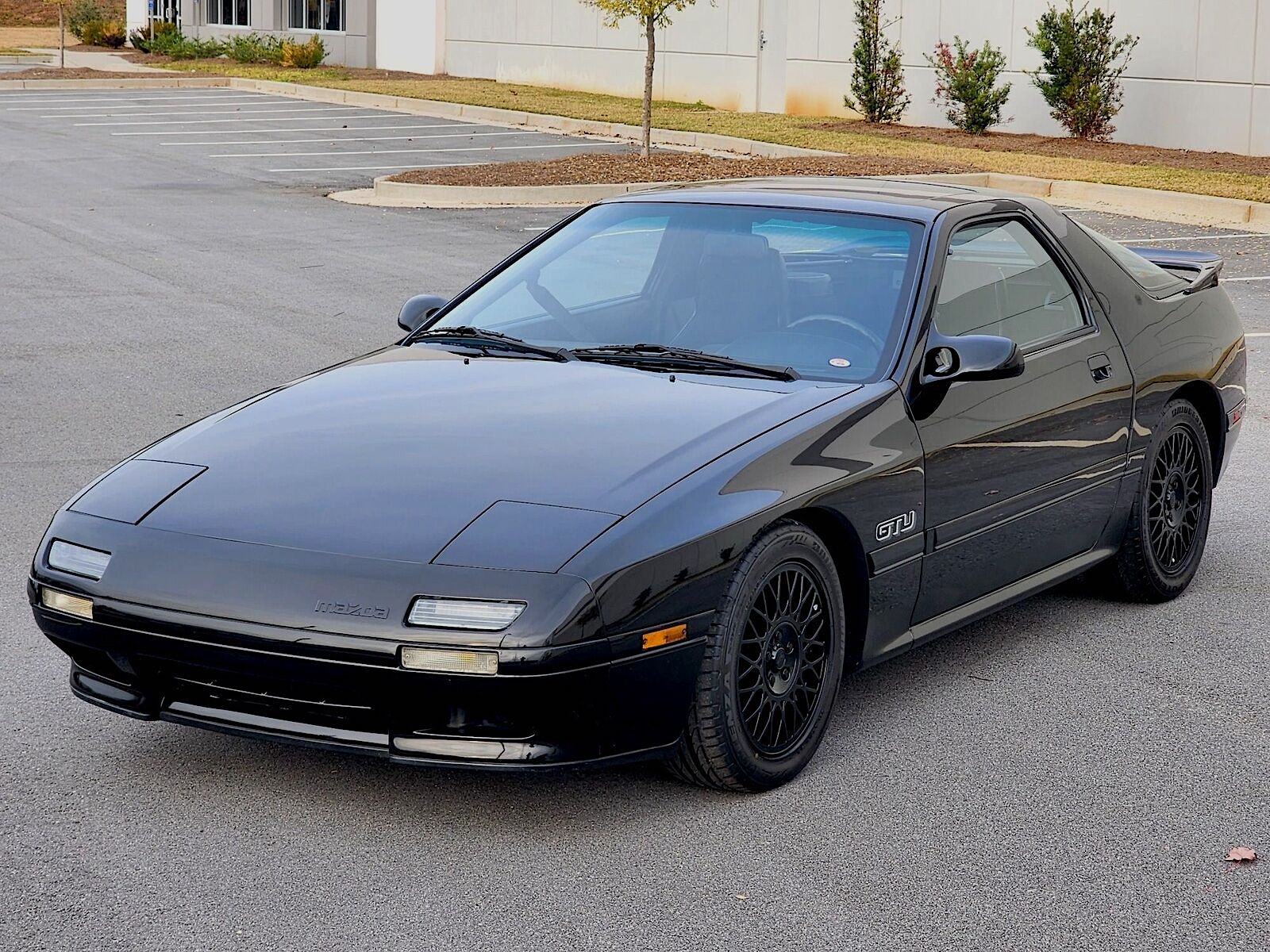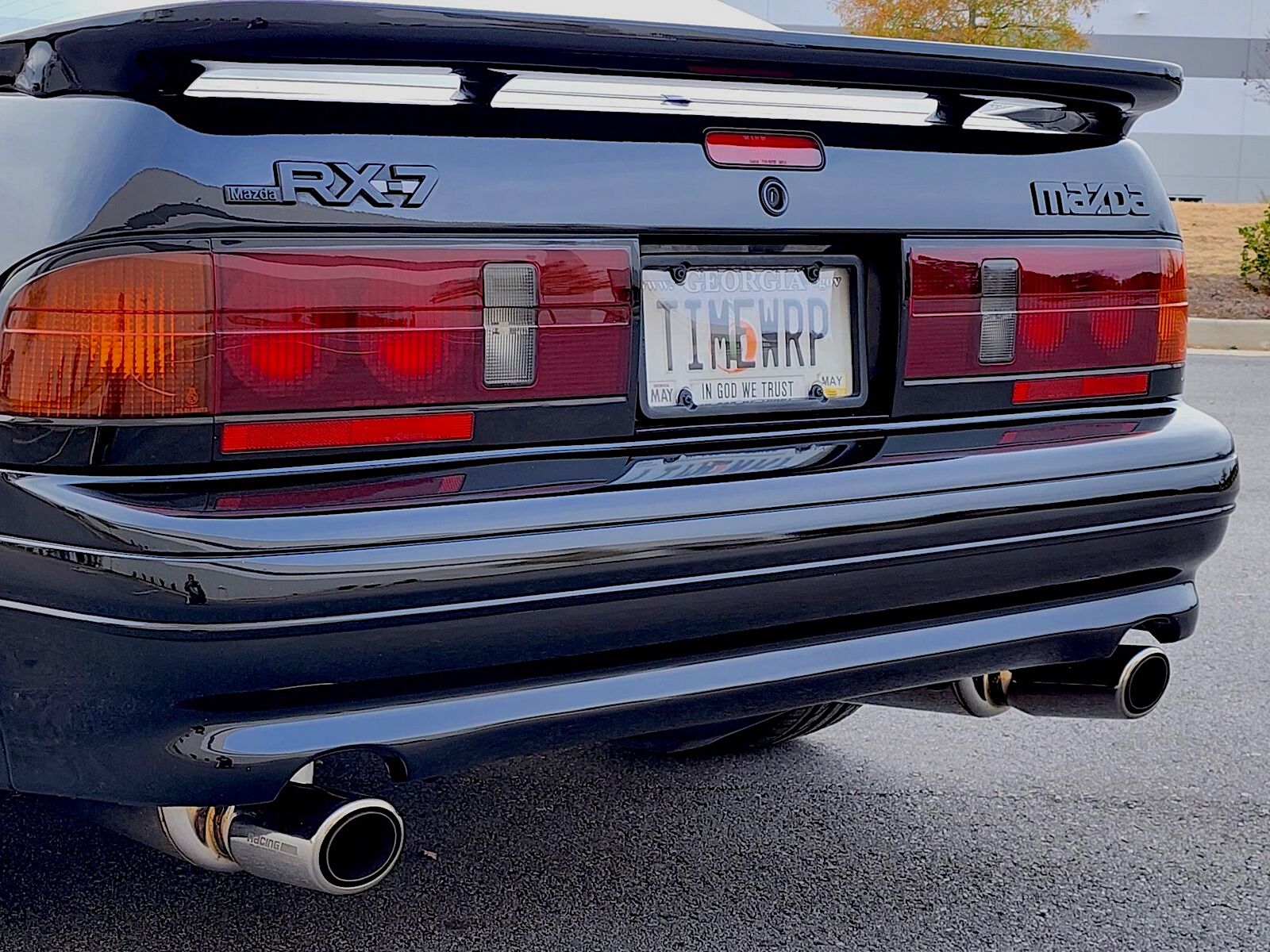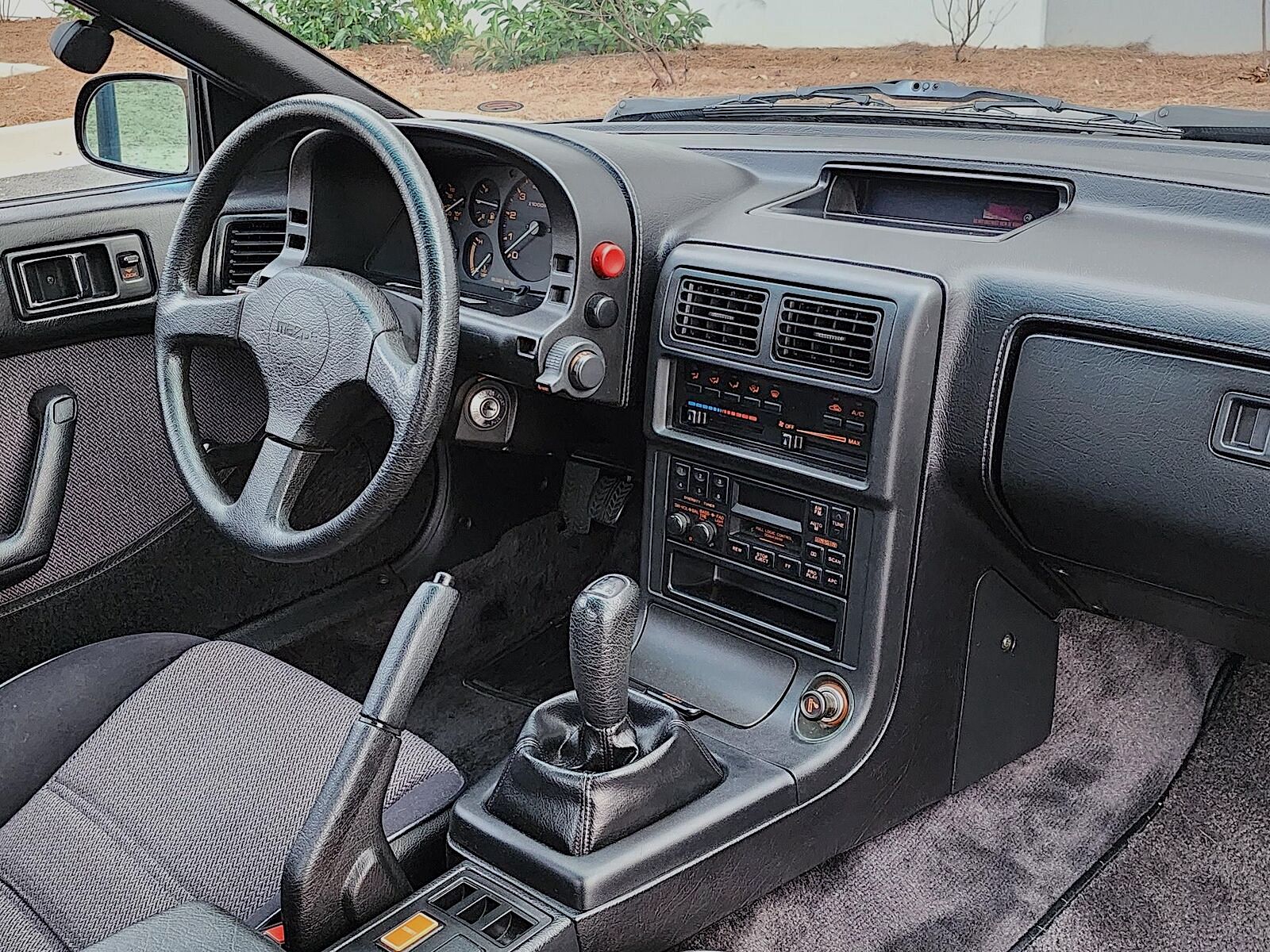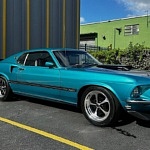The Engine That Goes Round and Round
The rotary engine has many benefits. Because the design does not involve reciprocating pistons, there are few moving parts: just a couple of rotors, each spinning inside its respective housing and connected by an eccentric shaft. The rotors rotate only in one direction, allowing quick flights to sky-high rpm.
Rotary engines also produce an incredible amount of power from a minuscule displacement. In the case of this RX-7 GTU, that’s 160 horsepower from just 1.3 liters. A turbocharged version made 200 horsepower more from the same volume.
In contrast, Nissan’s 1989 240SX, a popular contemporary of the RX-7, made just 140 horsepower from a 2.4-liter conventional four-cylinder.
Mazda is also known for going to extremes in shaving weight from its sports cars. The benefits are felt in nimble handling, quick acceleration, and short braking distances.
The rotary engine’s ability to generate power from a compact size fits this ethos perfectly. It allowed engineers to fashion a lithe sports car around the motor. The motor was so small that it fit behind the front axle in a front-mid-engine layout for optimal weight distribution and thus increased agility.
Of course, the rotary engine wasn’t without its downsides. It had worse fuel economy than traditional piston engines, and it was harder for Mazda to keep up with emissions standards. They’re also a bit more fragile if not cared for, which many drivers accustomed to piston engines did not realize.
That’s why rotary engines are no longer in use, except in the MX-30 hybrid (a vehicle unavailable in the US) as a range extender that feeds the onboard battery.
The Racing Rotary
However, in 1989, the rotary helped Mazda assemble a brilliant sports car package. It was the first year for the Series 5 RX-7, which saw a slight bump in horsepower and torque. The accompanying facelift included the highly desirable smoked taillights that Series 4 owners often swap into their older cars.
During this era, Mazda dominated the IMSA road racing series. The company racked up more than 100 victories with the RX-7, making it the winningest carmaker ever to race in the series at the time. The car for sale gets its trim level from this racing series, where GTU stands for the Grand Touring Under 2.5-liters class.
The RX-7 was a hit but almost too good for its own survival. For years, many were raced, wrecked, or questionably modified. After that, second-generation examples were often cannibalized for their rotary engines, used to replace blown motors on other RX-7s, or swapped into older Mazdas like RX-2s and RX-3s.
An Original Rarity
That’s why the RX-7 GTU for sale is such a rarity. With just 51,379 miles, this naturally aspirated specimen has barely been driven. It boasts beautiful original paint, interior, electronics, and floor mats. There are some modifications, like a period-correct strut tower brace and exhaust from Racing Beat, the de facto aftermarket company for Mazda parts. The OEM wheels have been painted black, but that should be easily correctable.
Some may decry the RX-7 GTU for its lack of a turbo. However, those systems require more care and maintenance. In the long run, this version should be more turnkey. Besides, the extra power isn’t necessarily what this car is about.
With the RX-7 GTU’s superb handling, rowing the five-speed manual along winding canyon roads will provide far more joy than zero-to-60 stomps. Today is the perfect time to enjoy such a car. Given the peculiarities of its engine, there will likely never be another rotary sports car again.
Shop now for Mazda RX-7s
